It’s a fair assumption most KITPLANES® readers were not big on essay writing in school, which at least left me with a job (I’m better at rearranging the dictionary than fabricating airplane parts). In any case, one tenet of essay writing, such as what goes on here monthly, is for the author to have answers to all the questions he or she might ask.
Unfortunately, this is really not one of those times.
My question is more a troubling observation. And that is, many secondary and tertiary owners of such straightforward Experimentals as RVs are asking “See Spot run!” questions, as another staffer recently put it. That is, there’s a growing number of Experimental owners out there who didn’t build their plane, they wrote a check for it, and as is the norm these days, they have a near-total lack of mechanical skills or understanding. Coupled to a shortage of A&Ps, especially those with a bent for homebuilts, there are occasional maintenance faux pas being committed in hangars these days.
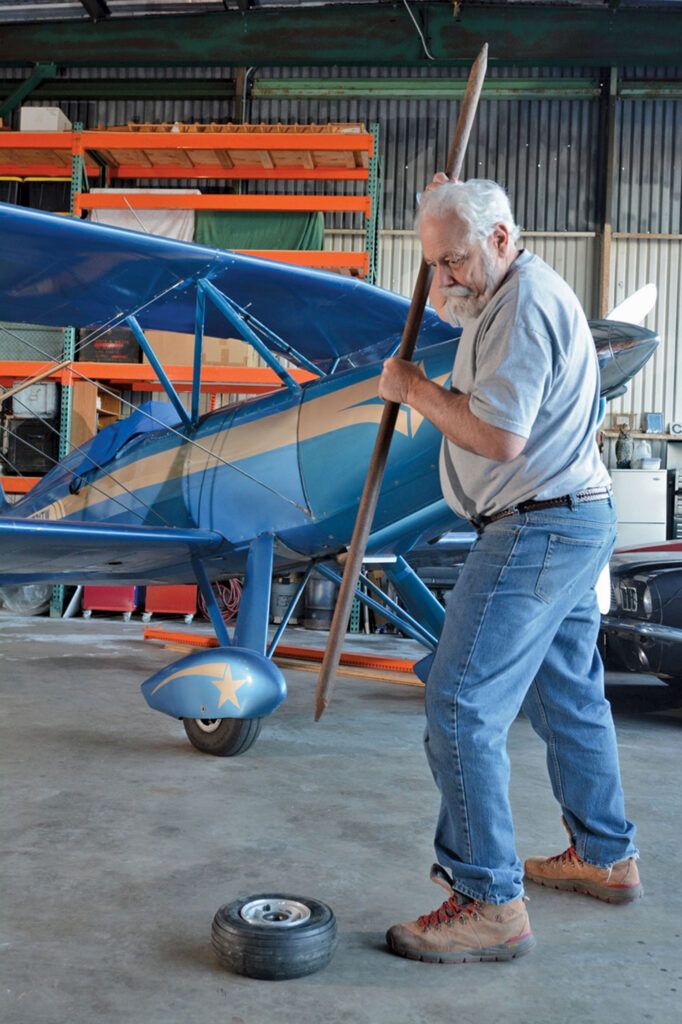
What sort of carnage de wrench are we talking about? How about taking a main gear tire off the wheel without disassembling the wheel first? Your first thought is no doubt such an accomplishment denotes a conspicuous display of persistence, which, if it weren’t for such a profound state of ignorance, might prove admirable. Sort of like rooting for a prisoner who tunnels through a foot of concrete using plastic spoons.
Then you might consider how one retains such profundity of ignorance in the face of split-rim wheels. Similar to gaping at the bolts sticking out of Frankenstein’s monster’s neck, there are at least three nuts and bolts passing through the average light-airplane wheel. After wrestling manfully with a fully torqued 6.00-6 assembly for a few minutes, you’d think those nuts and bolts might spark an idea while one took a break to search for yet another screwdriver to hammer between tire and rim. We do hope they let the air out first.
But is it all that far-fetched if the only relationship you have with tires and wheels is the front counter of a Big O Tire store? Having never fixed a flat on a wheelbarrow or bicycle, our model modern has never been introduced to the concept of an inner tube. Let’s also assume our hero has never spent a summer in Texas drinking beer in a river while suspended in a retired Goodyear truck pneumatic or slid down a snowy hill in same.
Ultimately it’s all because no one works on their cars anymore. It used to be young folks got under the hood to either keep it running or make it faster, but the days of casual wrenching are long gone, so the average person has the same relationship with their car as a toaster. You can substitute tractor or boat or truck for car here and come to the same conclusion. Mechanical items today are built to near perfection in distant factories, and end users have no clue how they work. Urban living—and nearly everyone lives in the city or ’burbs today—gives little chance to play mechanically, especially at a fabrication level.
The fun begins when such folks buy an Experimental and figure they can work on it because, well, you know, like it says on the internet, everyone works on their Experimentals.
Another bit of collateral damage of mechanical ignorance is just how much work and effort goes into nice machinery. While COVID has challenged all of us at the end of the supply chain, many of our newbies are defiant and insistent when it comes to getting parts or blaming manufacturers for “parts failures” they themselves have caused with their hack job operation or maintenance. So we’re told by more than one parts manufacturer.
This, of course, is expensive for all of us. The smart parts makers don’t argue with the F students, as Burt Rutan labeled the unter-mediocre pestering him on the phone back in his RAF days. Instead, when someone calls upset about “your lousy parts,” the smart parts maker simply sends them a new part at no charge. That’s a bargain compared to fighting in court, or worse yet, defending one’s reputation on the endless internet. But bargain or not, it’s a cost and we all pay for it eventually.
In a way, we’re a victim of our own success. To pick on the runaway leader in Experimental aircraft builds, over 11,000 Van’s RVs have been squeezed together in the last 50 years. Inevitably a growing number of the original builder-owners have moved up or out of aviation, leaving their fine airplanes to secondary owners. And that’s just RVs; all sorts of other homebuilts have been sold to second owners in the last couple of decades.
For sure this secondary market of well-designed and assembled homebuilts is a wonderful thing. Those of us already at the airport but without the time to build can simply buy a reasonably built, generally high-performance little plane and join the fun. But this also allows skipping that all-important inculcation to aviation, especially the hands-on part. It’s easy for checkbook newbies to miss their immersion into the aviation, much less homebuilding, culture. If putting together even a fast-build kit takes a year, that’s a year spent handling airplane parts and putting them together in some semblance of an aviating device as confirmed by an inspector. It’s also a year thinking about airplanes and likely interacting with airplane people. It would be difficult to not at least get a whiff of homebuilding culture along the way. But not so if you just step into a ready-to-go airplane.
So now we reach the tough part: how to improve the situation. Perhaps the first thing to realize is things aren’t all that bad. For starters, today’s Experimentals are nearly universally very good airplanes tolerant of abuse. Again, all those RVs, besides being sporty, economical, well-supported, understood by the FAA and insurance world, good resale bets and all that, are forgiving airplanes. Forgiving both of modest flying technique and learner-level building skills. Heck, you could likely leave every other rivet out of most RVs and get by with it under good conditions. I exaggerate to make a point, but not much. Let’s also acknowledge the huge effort Van’s has put into all sorts of educational materials; they’ve really stepped up to their leadership role in the hobby.
The next bit of good news is, most secondary Experimental buyers have not missed homebuilding culture and as a consequence color between the lines. They may have owned other airplanes or come from an airplane family or picked up the lifestyle from friends at the airport.
Then there is EAA, which like Van’s, offers its own multitude of workshops, webinars, seminars, magazines and general omniscience over the homebuilt scene. They’re doing a great job for anyone paying attention. But that does leave the few who aren’t paying attention due to a general unconsciousness or willful hubris to carry on in Captain Solo tradition. Painfully, it’s the rest of us at the airport who have the only real contact with these people, and it might be fleeting at that. But if we do, and we see something stupid, we might want to say something—such as, “You need to find a good A&P.” It likely won’t do much good, but it might. The homebuilt you save could be the one you sold.









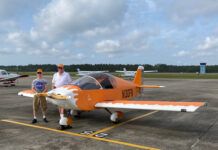
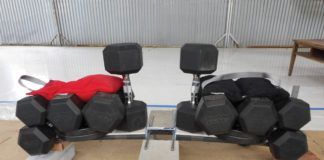
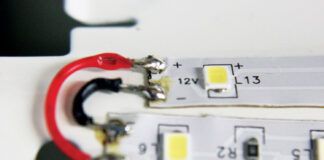
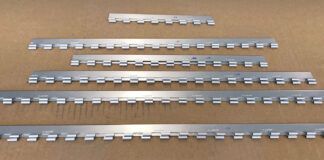
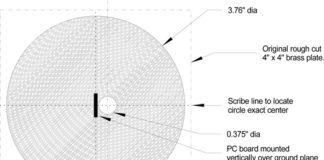
Ogg make fire. Ogg fix airplane.
🙂
Thanks, for calling me a dumb ass! I freely admit it. I am one of those who wrote a check. know next to nothing of aircraft mechanics. However, I am totally committed to learning. I am very fortunate to have a very good , and very busy mechanic willing to work on my Glasair. When he shows up I watch his every move, and I ask questions to the point that I probably irritate him, but I am careful to not get in his way. I have also attended EAA workshops on composite building and electrical systems. As a non builder what I really want is to find someone willing to spend the time teaching/helping me work on my plane. Someone who will tell me the why and the how and then watch while I do the work to make sure I don’t screw it up.
George,
The essay wasn’t about you and I sincerely hope you didn’t take offense from my remarks. You are obviously paying attention and working within your skills while seeking an education and growing your skills. You are exactly the person homebuilding needs, and as you point out, exactly the person the homebuilding community needs to welcome and support.
My remarks were directed at those who aren’t paying attention, who don’t know enough to realize they have much to learn and are too ignorantly arrogant to withstand a few moments of self-evaluation.
Like you I did not build my Experimental, and like you I’ve been soaking up all the wrenching wisdom I can find. Which perhaps gives me the understanding to underscore your idea that technical advisors for non-builder owners are immensely important. The EAA Technical Counselor program is the obvious place to begin. See https://www.eaa.org/eaa/aircraft-building/volunteer-assistance/eaa-technical-counselors
Thanks for being part of the conversation.
tw
Tom, no offense taken. I was smiling when I wrote the comment. However I was dead serious about wanting/welcoming technical advice and mentors. I think a once a month meeting to discuss, watch , and perform maintenance or a repairs at members hangers would be a great activity for local EAA chapters. Talk to me , show me , and let me get my hands dirty!
Commander Klutz
Tom,
Truly an outstanding article. You absolutely nailed it.
Made good cash working on those second hand RVs when most A&P wouldn’t think of it.
Experimental had a stigma attached to it. And I took it all the way to bank.
It’s a great stream of revenue for A&Ps.
Thank you, Tom!!!! You are spot-on! Iit’s about time somebody talked about this. I’ve been watching the increasing number of Captain Klutzes for about ten years and shuddering at how much ignorance is out there. And as you say, it’s not just on airplanes…. It’s cars, lawnmowers, snowblowers, motorcycles … a whole bevy of mechanical critters that we old geezers grew up diagnosing, fixing, and troubleshooting. The crop of nouveau riche newbies out there is huge, with sparkling clean hands and too often with WAY more money than sense. Yes, all that mechanical equipment is more complicated today than we were growing up, but a basic working knowledge of simpler systems goes a long way toward a competent airplane owner.
The EAA Homebuilders videos were a brilliant idea, and today are the finest repository anywhere for basic aircraft repair and maintenance info. And close behind comes Kitplanes magazine and leaders like you, Cook, Prizio, Dye, etc, etc who offer solid and expert advice to ALL of us, let alone the Captain Klutzes.
Frighteningly, If some combination of us don’t remedy this situation of Rampant Ignorance, the entire amateur-built aircraft arena is threatened.
This goes perfectly with the “Musings of a New A&P” article. I’m a professional pilot, but not an A&P, however I am a Mechanical Engineer dabbling in aircraft design. When I go to use a rivet, I seek out the datasheets and specs first. I have hard copies of all the A&P resources and EAA/misc. resources I need and look up what I need to do, before doing it. I’m also currently building, as well as own a certified plane and do as much maintenance on it myself as I can. I’m learning as I go, and not afraid to hire an A&P to do it for me if need be (even if it’s something I could do, but not comfortable doing yet).
People don’t realize how easy it can be to do things right. Just have to know how to find the answers, as the A&P article talks about. The first few times you do something it can take significant time and effort. The first oil change I did as an aircraft owner took me 5hrs. But now I can easily do it in a fraction of that time now that I know exactly what I have to do, in what order, etc. I never make myself rush either. if it takes 2x as long as I hoped, and I miss a day of flying, so be it. Better to learn it, and do it right the first time. I’ve been doing more and more of my own car maintenance lately too, and finding it to be far easier and cheaper than expected. The more you do, the more you learn, the easier and faster it gets.
Often time the right way is cheaper in the long run too, for a variety of possible reasons. We don’t have to know how to do everything, just have to be willing to learn.
Great article Tom.
I too am an owner of an RV. I watched the builder build it 30 years ago and now see myself as it’s custodian. Near every time I fly it I think of my old mate with gratitude. As a young bloke, up to my eyes in debt trying to buy a farm i was constantly under the hood working on my old second hand cars and machines. These days the electronics stops me dead. Heck it recently took weeks for specialist mechanic to diagnose a failure in a sensor which shut down a turbo on my Pugeot. Fortunately I have a good and longstanding relationship with several LAMEs, all of which are happy for me to be involved in working on my RV to the extent of my ability. And aeroplanes seem generally very simple mechanically, especially the older ones and most amateur built/experimentals.
From my experience a couple practical points i find worth remembering. When removing a part, working on an item or doing something that requires disassembly- if it doesn’t come easily don’t force it. From my observation human nature is inclined to use increasing degrees of force until something inevitably breaks. Hence the calls to parts suppliers complaining about faulty part.
The other thing is often you don’t know what you don’t know. I think it’s wise to have the attitude that if you don’t know that you know then you should assume you don’t know. At that point seek the advice and support of your LAME /A&P.
One final point; it’s prudent to learn all you can so you can have some oversight on what is done on your aircraft. As individuals we all have different standards and many things are not clear cut. It’s often the shades of grey that can cause problems later. While we don’t want to interfere with our mechanics work ultimately we are responsible for the condition of our machines and to do that well we need to know as much as possible. Otherwise it may well be a case of it’s condition being determines by the least concerned link in the maintenance chain.
Yes, you are right…..I wrote a check for my first plane! WHY because I am old and would simply die before I got one built 🙁 Th plane was bought, fly away…..no more to pay, Including work I paid to get done by a qualified LAME who works for the business. I trailered this aircraft home since some of the work included folding wing conversion, which the kit was not built with originally, but could have been.
On my close inspection, with little aviation knowledge I ended up grounding the aircraft as it was a flying death trap.
I sent an engineer I know pictures of the problems and he agreed.
So, I illegally commenced to repair it myself, getting FAA repair manuals, aircraft specific maintenance and repair manuals and went to work. Many months later, I got my work inspected and was told I did an excellent job. Remember I am qualified in NOTHING. Since then I have added 2 more aircraft to my fleet, yes I wrote cheques for them too.
I should add, I am not licenced either, but my Instructor is about to make me go solo, I also train in one of my aircraft as its factory built.